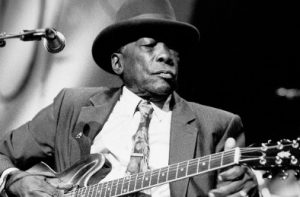Tupelo
John Lee Hooker
The Great Mississippi Flood
In this performance filmed during the mid-1960’s John Lee Hooker recants the devastation wrought upon the small town of Tupelo, one of many decimated in the great Mississippi delta flood disaster of 1927.
Influential post-war blues singer, guitarist, and songwriter John Lee Hooker was born in Coahoma County near Clarksdale, Mississippi. From a musical family, he was a cousin of Earl Hooker. John was also influenced by his stepfather, a local blues guitarist, who learned in Shreveport, Louisiana to play a droning, one-chord blues that was strikingly different from the Delta blues of the time. John developed a half-spoken style that was his trademark. Though, similar to the early Delta blues, his music was rhythmically free.
The Great Mississippi Flood of 1927 was the most destructive river flood in the history of the United States. It began when heavy rains pounded the central basin of the Mississippi in the summer of 1926. By September, the Mississippi’s tributaries in Kansas and Iowa were swollen to capacity. On Christmas Day of 1926, the Cumberland River at Nashville topped levels at 56.2 feet (17 m), a level that remains a record to this day, even exceeding the devastating 2010 floods.
Flooding overtook the levees causing the Mounds Landing to break with more than double the water volume of Niagara Falls. The Mississippi River broke out of its levee system in 145 places and flooded 27,000 square miles (70,000 km2). This water flooded an area 80 km (50 mi) wide and more than 160 km (99 mi) long. The area was inundated up to a depth of 30 feet (10 m). The flood caused over $400 million in damages and killed 246 people in seven states.
Really The Blues is sponsored by Jazz on the Tube
Click here to Support US

